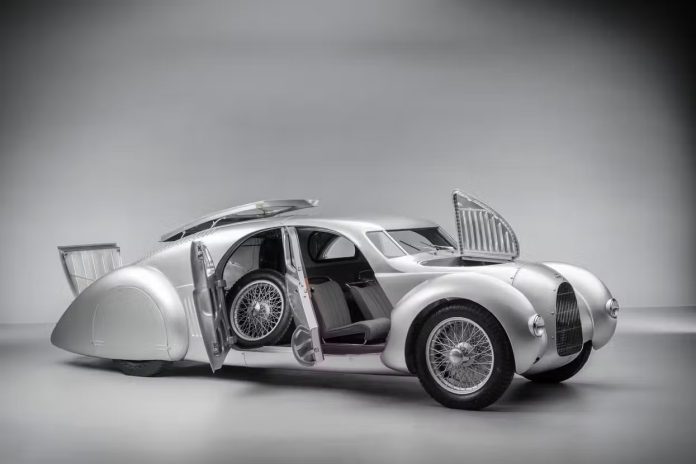From Fantasy to Reality: The Birth of the Schnellsportwagen
Imagine a time when cars were more like roaring beasts than the whisper-quiet hybrids we see today. It was the 1930s, a period of pure, unfiltered automotive madness. Picture this: Auto Union and Ferdinand Porsche, sipping on some presumably strong coffee, dreaming up a road-going monster that would make jaws drop and Mercedes-Benz sweat. Enter the Auto Union Type 52 ‘Schnellsportwagen,’ a car that was supposed to set the roads on fire but ended up as a forgotten sketch – until now.
Fast forward nearly 90 years, and Audi Tradition decided to play automotive archaeologist. They dusted off old plans and, with the wizardry of Crosthwaite & Gardner, built the Type 52 from scratch. And where better to debut this beauty than at the Goodwood Festival of Speed?
The Goodwood Festival of Speed: Where Legends Come Alive
For those who aren’t familiar, Goodwood is like the Coachella for car lovers. It’s a place where automotive legends, both old and new, come to strut their stuff. This year, among the revving engines and smell of burning rubber, the Type 52 stole the spotlight. It’s not every day you see a car that never got the chance to be built back in the day, resurrected in all its glory.
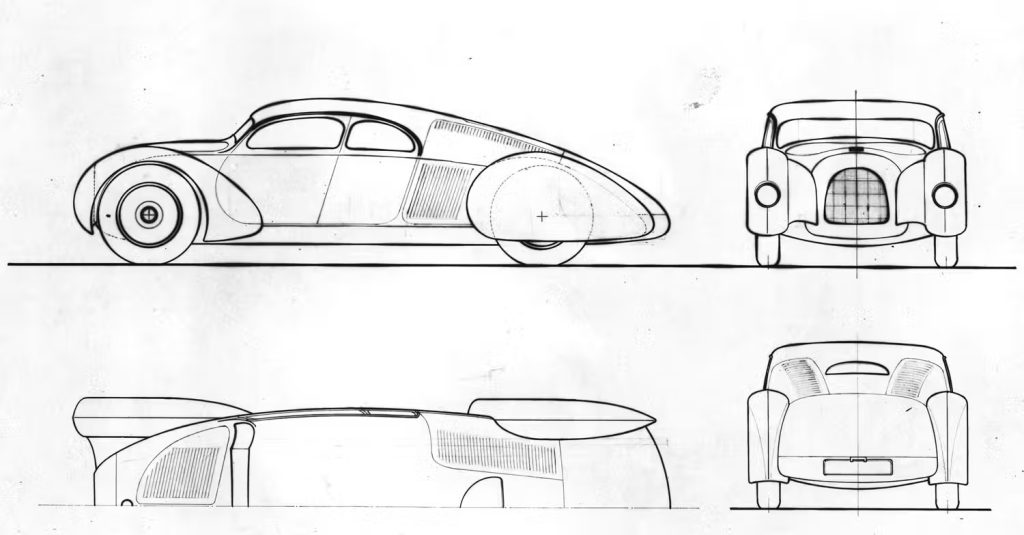
The Auto Union Silver Arrows: Speed Demons of the Past
Before we dive into the Type 52, let’s take a pit stop to appreciate its siblings – the Auto Union Silver Arrows. These were the Grand Prix racers that made other cars look like they were running on hamster wheels. With their massive 16-cylinder engines and lightweight bodies, they were the epitome of speed and innovation, thanks to the genius of Ferdinand Porsche.
A Road-Going Silver Arrow? Yes, Please!
While the Silver Arrows were busy breaking speed records and dominating racetracks, there was a parallel dream – the Type 52 Schnellsportwagen. Imagine a car that could take you from your mansion in the Alps to a weekend race at Le Mans, all while turning heads and making other drivers weep with envy. That was the Type 52’s mission.
Auto Union envisioned this car as a luxurious sports sedan for the wealthy elite who craved both speed and style. It was supposed to share its DNA with the Type 22 racer, including a beastly 16-cylinder engine. But, like many ambitious projects, it got shelved. Why? Nobody knows for sure, but war, economic shifts, and maybe even a lack of caffeine might have played a role.

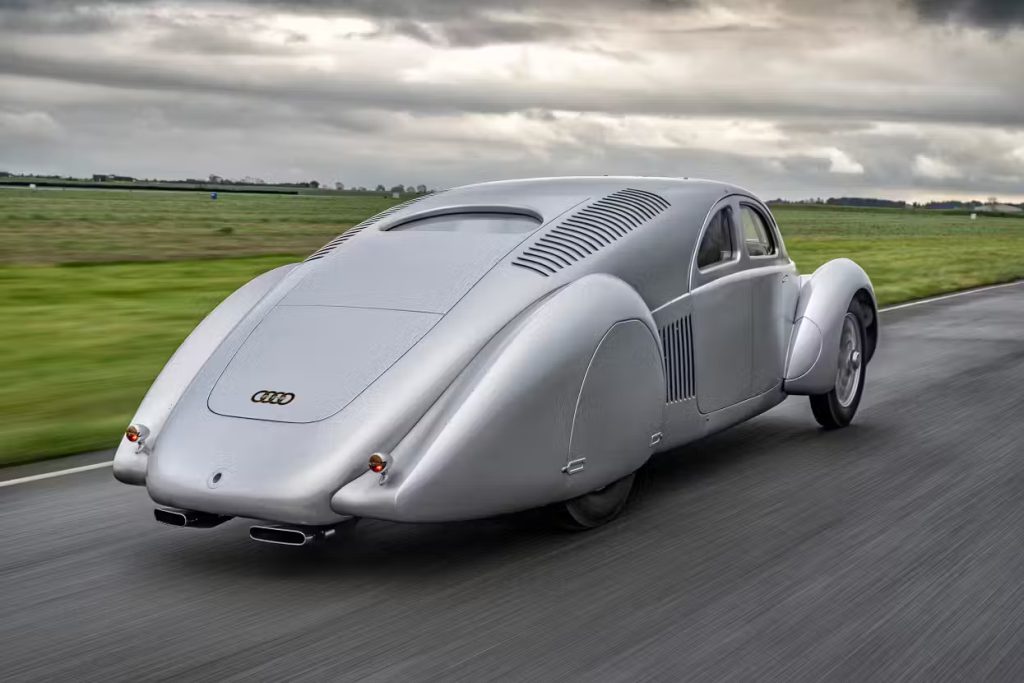
The Comeback Kid: Audi Tradition’s Masterstroke
Decades later, Audi Tradition said, “Hold my beer,” and decided to bring the Type 52 back to life. They enlisted the help of Crosthwaite & Gardner, a team of restoration magicians. Using only the old sketches and plans, they created a masterpiece that’s part history, part modern engineering marvel.
Under the Hood: The Heart of the Beast
Let’s get into the juicy details. The Type 52 is powered by a 4.4-liter V16 engine – yes, sixteen cylinders of pure awesomeness. Originally, it was designed to run on regular gasoline with reduced compression, but it still packs a punch with 197 horsepower and a mind-blowing 322 lb-ft of torque. That’s right, 322 lb-ft at just 2,350 rpm. Back in the day, this would have been like strapping a rocket to a roller skate.
This powerplant is paired with a five-speed manual transmission, giving drivers the full tactile experience of shifting gears and feeling every ounce of that V16 fury.
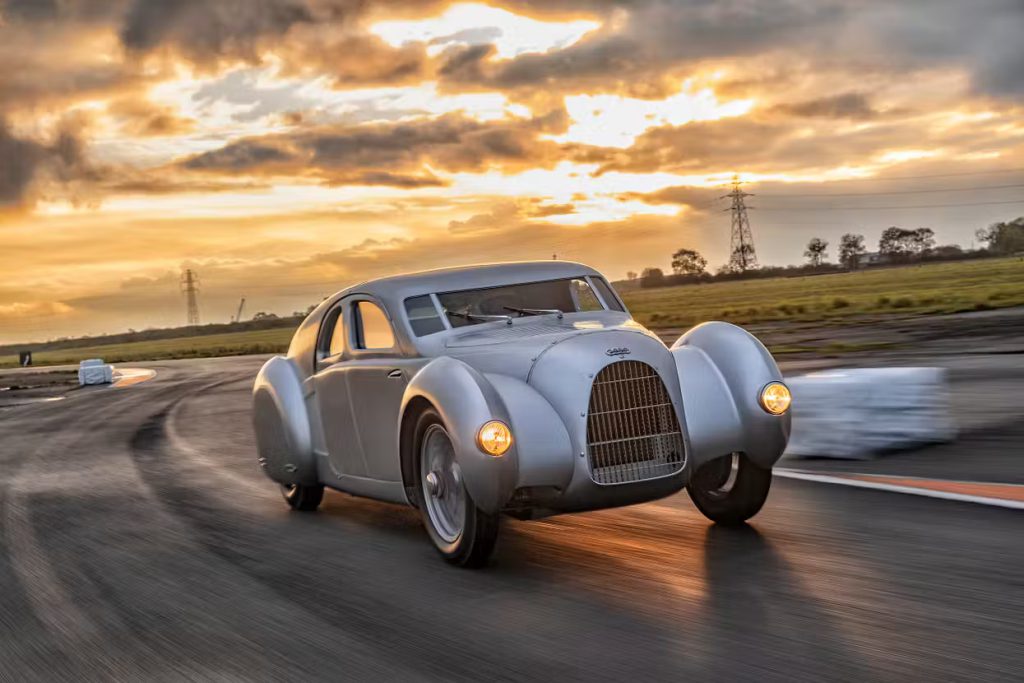
Design and Engineering: A Blast from the Past
The Type 52 isn’t just about raw power. It’s a beauty to behold. The car sits on a ladder frame chassis with a mid-mounted engine, placing the V16 right behind the passenger compartment. This design choice not only balanced the car but also gave it an aggressive stance.
The interior is a blend of vintage charm and modern craftsmanship. Ivory-colored dials set into walnut wood trim give it an elegant, timeless look. The driver sits in the center, McLaren F1 style, with rear passengers offset to either side. This setup not only looks cool but also optimizes the car’s weight distribution.
Driving the Schnellsportwagen: A Glimpse into the Past
Imagine sliding into the driver’s seat, gripping the three-spoke steering wheel, and firing up that V16 engine. The roar alone is enough to give you goosebumps. As you shift through the gears, the car surges forward with an eagerness that belies its age. With a top speed of 124 mph, it’s no slouch even by modern standards. Remember, back when this car was conceived, the Austin 7 barely hit 50 mph.
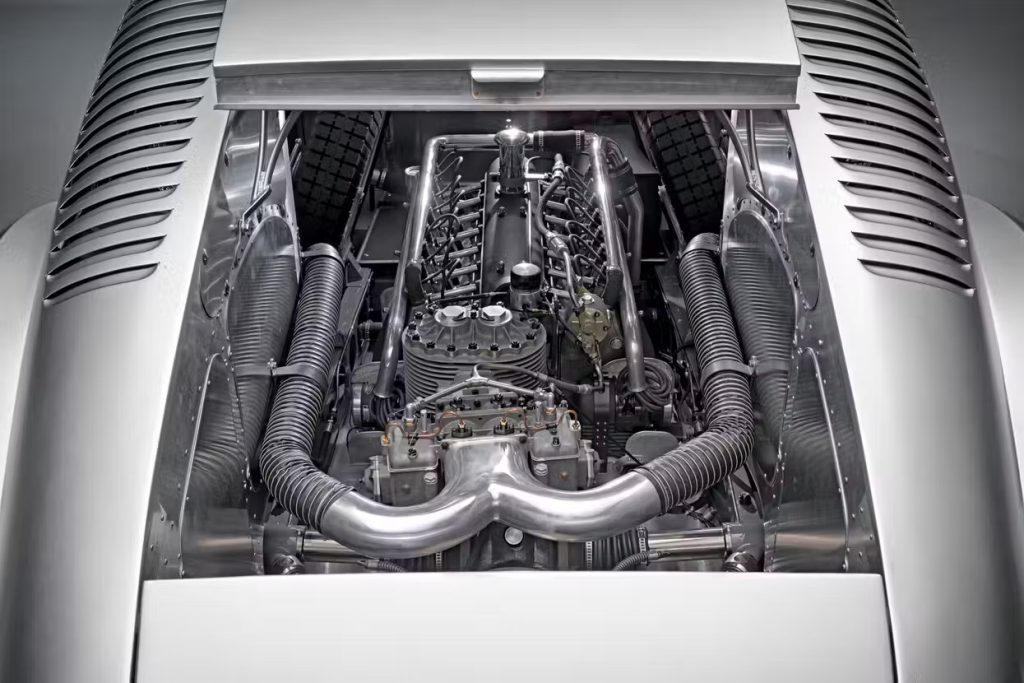
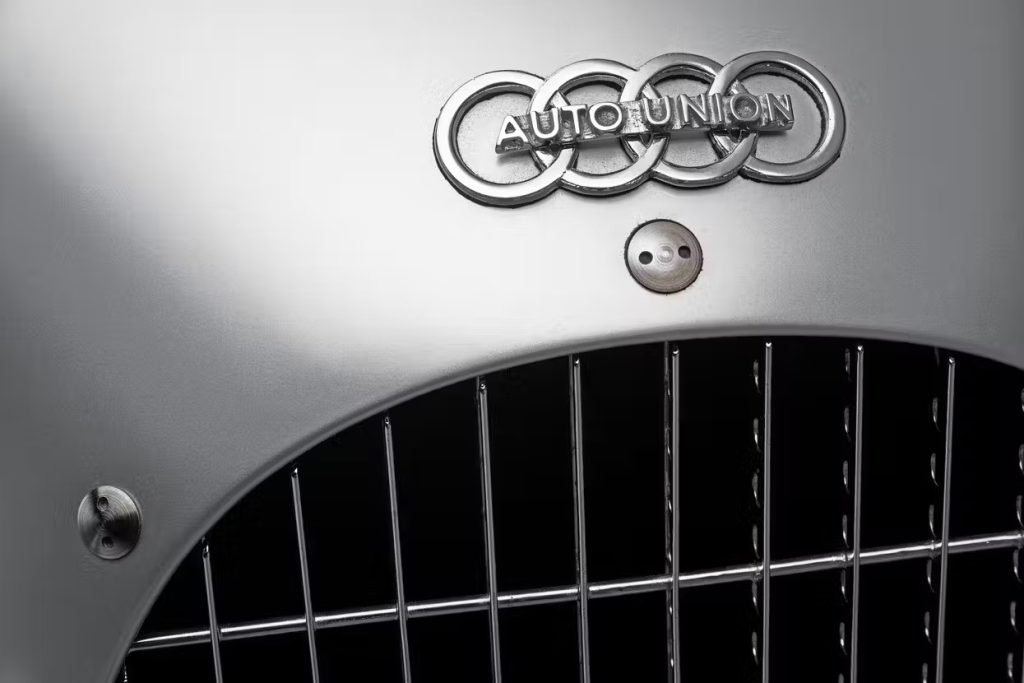
Modern Touches: Bridging Old and New
While the Type 52 stays true to its roots, a few modern touches were necessary to make it roadworthy today. Crosthwaite & Gardner had to lengthen the wheelbase slightly to fit all the mechanical bits and bobs. The suspension was updated with longitudinal torsion springs and hydraulic dampers for a smoother ride. And let’s not forget the drum brakes hidden behind those wire wheels – a nod to the past but with a twist of modern safety.
The Goodwood Debut: A Star is Born
At Goodwood, the Type 52 wasn’t just a showpiece. It was driven by none other than Hans-Joachim “Strietzel” Stuck, whose father was a legend behind the wheel of the original Auto Union racers. Seeing this car in action, tearing up the hill climb, was a sight to behold. It’s a testament to the ingenuity of its creators and a tribute to a dream that almost faded into obscurity.
Why the Type 52 Matters: A Legacy Revived
So why should we care about a car that never even made it to production back in the day? Because the Type 52 is more than just a car. It’s a symbol of what could have been, a bridge between the golden age of racing and today’s technological marvels. It’s a reminder that sometimes, dreams do come true – even if it takes nearly a century.
SEO Focus: Audi Type 52 Schnellsportwagen – The Ultimate Revival
In conclusion, the Audi Type 52 Schnellsportwagen is a glorious blend of past and present. It’s a car that embodies the spirit of innovation and the relentless pursuit of speed. Thanks to Audi Tradition and Crosthwaite & Gardner, we can now see, hear, and feel what was once just a dream. And in doing so, we get a glimpse of an era where cars were more than just machines – they were legends in the making.




























